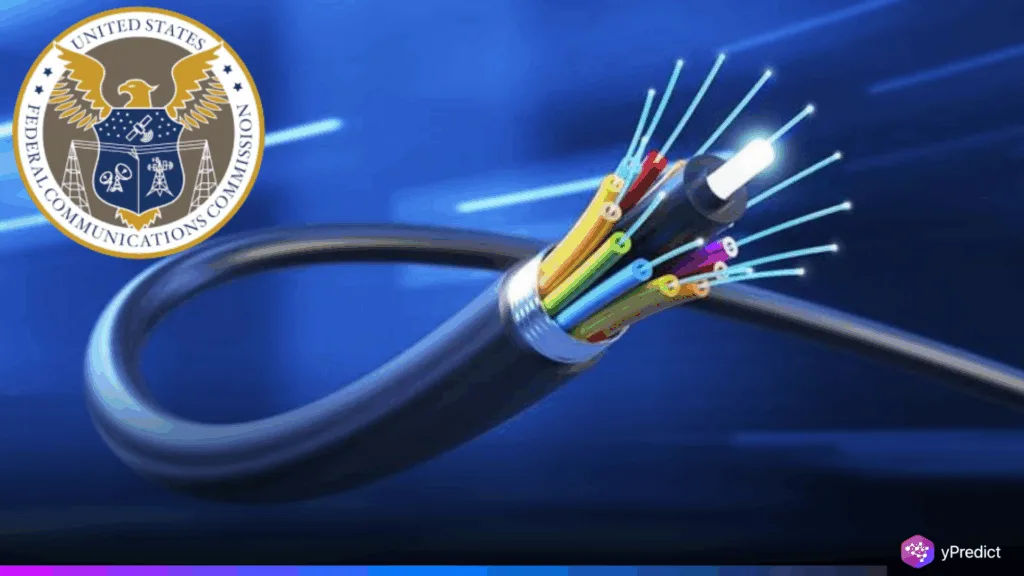
The Federal Communications Commission (FCC) of the United States is now ready to fast-track the establishment of undersea cables in order to assist the American goals of national security and technological superiority, especially with the capabilities in the domain of artificial intelligence. Such cables transmit 99 percent of the world’s internet traffic, thus becoming important infrastructures. The plan brings in quicker licensing, enhanced cybersecurity, and more reviews in the context of foreign ownership. Studies indicate there may be a provision in the strategy against importing technology, particularly of Chinese components, in the U.S.-linked cables. The step marks a national initiative towards guarding strategic digital facilities and staying ahead in new generation technologies.
Background of Undersea Cables Powering the Global Internet
Maritime fiber-optic cables are the basis of the world communication system, transmitting nearly all the data between nations, such as video conversations or other requests, fund transfers, and AI model distribution. People install such cables on the floor of the ocean. Thus, join the continents together and allow transfer of information globally on a real-time basis. They are even more significant in the age of AI, where gigantic data interchange between nations and cloud servers is vital in training and utilizing large-scale models.
Recognizing this strategic role, the FCC has announced a plan to improve the speed and security of undersea cable development. As AI adoption grows, the demand for reliable, high-capacity international links increases, placing pressure on existing infrastructure. A 2025 survey by Inside HPC found that over half of global data center professionals expect AI workloads to dominate within two to three years, indicating a sharp rise in cross-border data demand.
Historically, the cable approval process has been slow, with long waits for foreign ownership reviews and cybersecurity evaluations. These delays are becoming a bottleneck as the U.S. competes globally in AI and tech. The FCC’s plan aims to correct that by creating a faster, more secure path forward. As the internet’s physical layer, stakeholders increasingly see undersea cables as critical to national resilience and technological dominance.
The FCC’s Overhaul: Security, Speed, and Sovereignty at the Core
The FCC’s plan includes three major changes to how undersea cable projects are reviewed and approved. First, it proposes a 180-day timeline for national security reviews related to foreign ownership, providing predictability for investors while maintaining scrutiny. Second, it requires more stringent security measures for new cable facilities. Lastly, the plan simplifies the licensing procedure, which is the first in the restructuring since 2001, and this is to eliminate bureaucracy.
Increasing global tensions are associated with the change. Over the past few months, reports of sabotage of undersea cables by state-aligned forces have alarmed Washington. It is based on such concerns that calls to adopt a more defensive stance toward cable regulation have emerged. The FCC issued new guidelines to block high-risk foreign technologies, particularly Chinese, from being used in U.S.-connected systems. Since 2020, four cables tied to Hong Kong-based firms have already been denied approval, underscoring this security-first stance.
Such a shift is consistent with larger U.S. projects on infrastructure, such as increasing recent efforts to reshore semiconductor supply chains and increase local AI capabilities. The changes make it easier to understand and promise quicker routes to deployment as the owners of long-range subsea networks scale back their investment in projects like the multibillion-dollar Pacific cable planned by Meta. The FCC is positioning this policy update as a necessary step to ensure digital sovereignty and safeguard America’s technological future.
Protecting Infrastructure to Enable AI Leadership
The initiative of the FCC denotes the monumental works of transformation. In the manner in which the U.S. looks at the undersea cable infrastructure. Not only as an ordinary utility but as a strategic capital as well. The world with the dominance of AI is impossible to live in without these cables. In order to preserve speed, scale, and access all over the world. The FCC is also protecting the physical layer of American innovation. Tightening security and limiting approval times, and protecting against foreign assaults. Such moves would determine the success of the U.S. in maintaining its dominance in the AI and digital infrastructure sectors.






